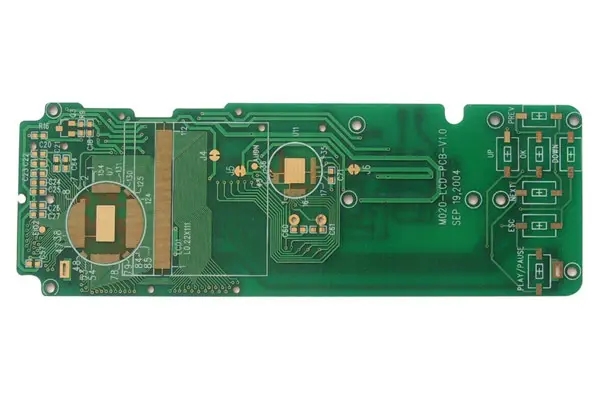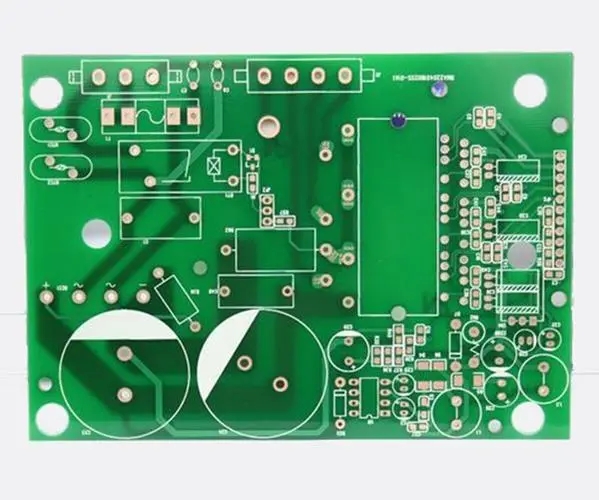

Difference between positive and negative PCB and 10 PCB heat dissipation methods
Negative film of PCB circuit board: generally speaking, it is the tightening process. The solution used is acid etching negative film because after the negative film is made, the required circuit or copper surface is transparent, while the unwanted part is black. After the exposure of the circuit process, the transparent part is chEMIcally hardened due to the exposure of the dry film inhibitor. The next development process will wash away the dry film without hardening, So in the etching process, only the copper foil (the black part of the negative) with the dry film washed off is bitten, while the line (the transparent part of the negative) with the dry film not washed off belongs to us
Positive film of PCB: generally, it is the pattern manufacturing process. The yao solution used is alkaline etching positive film. If viewed from the negative film, the desired circuit or copper surface is black, while the other part is transparent. SIMilarly, after exposure in the circuit manufacturing process, the transparent part is chemICally hardened due to the exposure of the dry film inhibitor. The next development process will wash off the dry film without hardening, followed by the lead tin plating process, The tin lead is plated on the copper surface washed off by the dry film in the previous process (development), and then the film is removed (the dry film hardened by light is removed). In the next process of etching, the copper foil without tin lead protection (the transparent part of the negative film) is bitten off with alkaline yao water, and the rest is the line we want (the black part of the negative film)
Positives and negatives are actually selected according to the process of each circuit board manufacturer. Positives: the process is (double-sided circuit board) cutting drilling PTH (one electroplating is also calLED thickened copper) - circuit two copper (graphic electroplating) and then SES line (film stripping etching tin stripping) Negative: the process is (double-sided circuit board) cutting drilling PTH (one electroplating is also called thickened copper) - circuit (not through two copper graphic electroplating) and then DES line (etching film stripping)
① Distinguish the master film, working film, positive and negative film and film surface of film (negative film): film can be divided into master film and working film (sub film), black film and yellow film, positive film and negative film;
② When distinguishing the film surface, the smooth surface of the black film is the film, while the yellow film is the opposite. Generally, you can see that the film surface is the film surface by scraping the film with a pencil or blade. (Parent piece: positive face, sub piece: positive face);
③ Generally speaking, the master film is black film, also known as silver salt film, which is mainly used to copy the working film (yellow film is also known as diazo film). However, the working film may not only be yellow film, but also has black film as the working film, which is mainly used to make high-precision HDI boards or to save costs in the production of one-time SMAll batches of printed circuit boards. The yellow film is used for manufacturing ordinary pcb boards and printed ordinary circuit boards in batches;
④ When using yellow tablets, please note that there are two types of yellow tablets: smooth and dumb. The second type is prone to oil surface indentation;

⑤ The light transmitting negative film on the film line (with copper), and the light opaque positive film; The positive is used for pattern electroplating. The developed part is the circuit, and the left part is the anti-corrosion electroplating, mainly coated with lead and tin. The negative is used for direct etching, and the corrosion resistance left after development is the line, which is directly etched with acid etching solution.
10 Simple and Practical Methods for PCB Heat Dissipation
There are ten ways to heat PCB boards! The heat dissipation of PCB is a very important link. So what are the heat dissipation skills of PCB? Let's introduce them one by one.
At present, PCB boards widely used for heat dissipation through PCB boards are copper clad/epoxy glass cloth substrate or phenolic resin glass cloth substrate, and there are a few paper based copper clad boards. Although these circuit board substrates have excellent electrical and processing properties, they have poor heat dissipation. As a heat dissipation way for high heating elements, it is almost impossible to rely on the resin of PCB itself to conduct heat, but to dissipate heat from the surface of electronIC components to the surrounding air.
However, as electronic products have entered the era of miniaturization, high-density installation and high heating assembly of components, it is not enough to rely only on the surface of components with very small surface area for heat dissipation. At the same time, due to the large use of surface mounted components such as QFP and BGA, a large amount of heat generated by the components is transferred to the pcb board. Therefore, the best way to solve heat dissipation is to improve the heat dissipation capacity of the PCB itself in direct contact with the heating elements, which is transmitted or distributed through the PCB board.
2. For equipment cooled by free convection air, it is better to arrange the integrated circuit (or other devices) in longitudinal or transverse direction.
3. The reasonable routing design is adopted to realize heat dissipation. Because the resin in the circuit board has poor thermal conductivity, and the copper foil lines and holes are good conductors of heat, the main means of heat dissipation are to improve the residual rate of copper foil and increase the thermal conductivity holes. To evaluate the heat dissipation capability of a PCB, it is necessary to calculate the equivalent thermal conductivity of the insulating substrate for PCB, a composite material composed of various materials with different thermal conductivity.
4. Heat sink and heat conduction plate are added to high heating components. When there are a few components in the PCB with large heat generation (less than 3), heat sink or heat conduction tube can be added to the heating components. When the temperature cannot be reduced, heat sink with fan can be used to enhance the heat dissipation effect. When there are many heating devices (more than 3), large heat dissipation cover (plate) can be used. It is a special radiator customized according to the position and height of the heating devices on the PCB board, or different component high and low positions can be picked out on a large flat panel radiator. Buckle the heat shield onto the element surface as a whole, and contact each element to dissipate heat. However, the heat dissipation effect is not good due to the low consistency of components during assembly and welding. Usually, a soft thermal phase change heat conduction pad is added on the surface of the components to improve the heat dissipation effect.
5. The components on the same printed circuit board shall be arranged in zones as far as possible according to their calorific value and heat dissipation degree. The components with low calorific value or poor heat resistance (such as small signal transistors, small-scale integrated circuits, electrolytic capacitors, etc.) shall be placed at the top (entrance) of the cooling air flow, while the components with high calorific value or good heat resistance (such as power transistors, large-scale integrated circuits, etc.) shall be placed at the bottom of the cooling air flow.
6. In the horizontal direction, high-power devices are arranged as close to the edge of the printed circuit board as possible to shorten the heat transfer path; In the vertical direction, high-power devices shall be arranged as close as possible to the top of the printed circuit board, so as to reduce the impact of these devices on the temperature of other devices during operation.
7. The heat dissipation of the printed circuit board in the equipment mainly depends on the air flow, so the air flow path should be studied during the design, and the device or printed circuit board should be reasonably configured. When air flows, it always tends to flow in a place with small resistance. Therefore, when configuring components on the PCB, it is necessary to avoid leaving a large space in a certain area. The configuration of multiple printed circuit boards in the whole machine should also pay attention to the same problem.
8. The devices that are sensitive to temperature should be placed in the area with the lowest temperature (such as the bottom of the equipment), and should not be placed directly above the heating devices. Multiple devices should be staggered on the horizontal plane.
9. The devices with the highest power consumption and heat generation are arranged near the best heat dissipation position. Do not place the components with high heat generation on the corners and surrounding edges of the printed circuit board, unless there is a heat sink near it. In the design of power resistance, select a larger device as far as possible, and make it have enough heat dissipation space when adjusting the layout of the printed circuit board.
PCB manufacturers, PCB designers and PCBA manufacturers explain the differences between positive and negative PCB films and 10 PCB heat dissipation methods.
然后
聯系
電話熱線
13410863085Q Q

微信

- 郵箱











